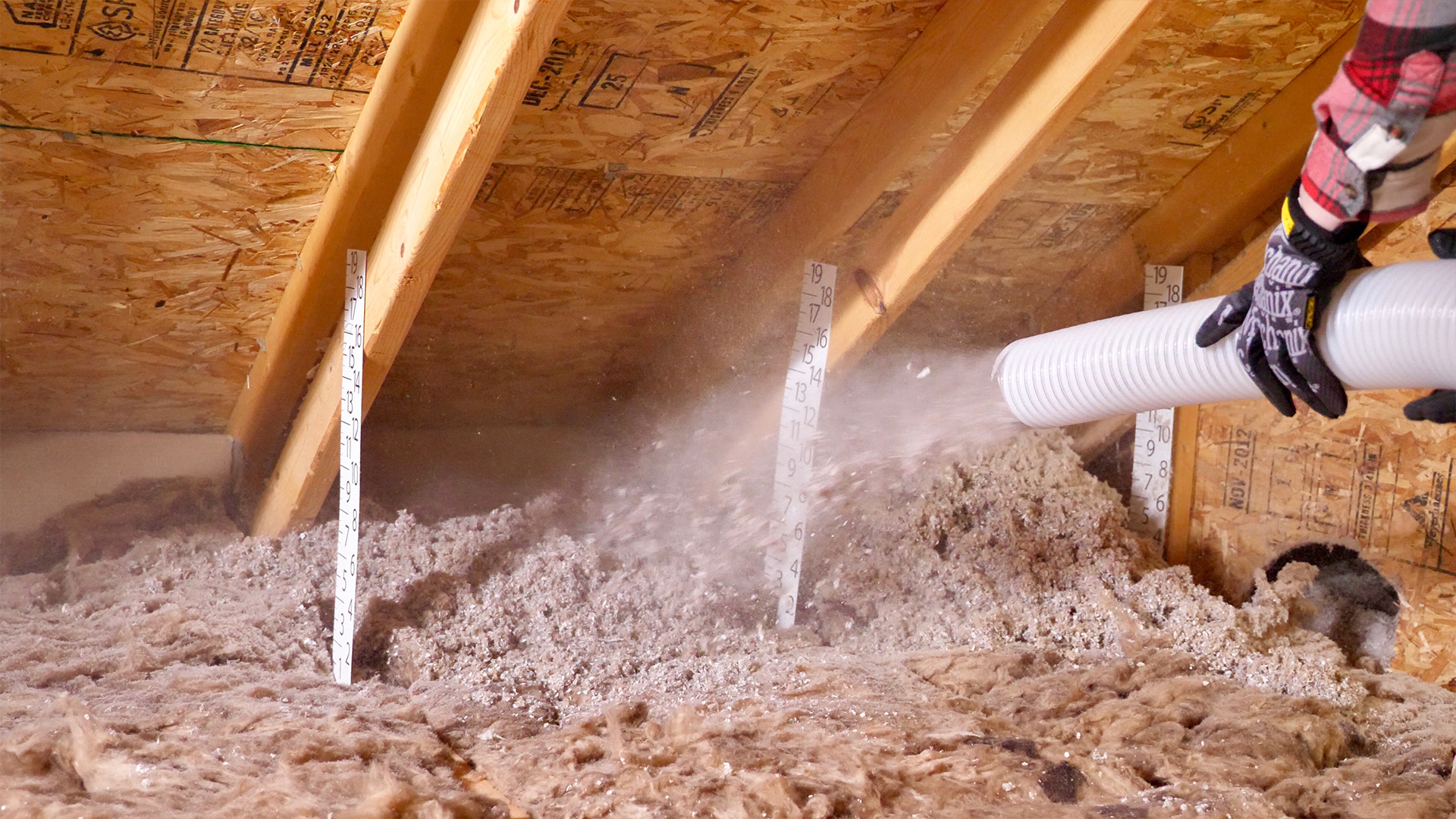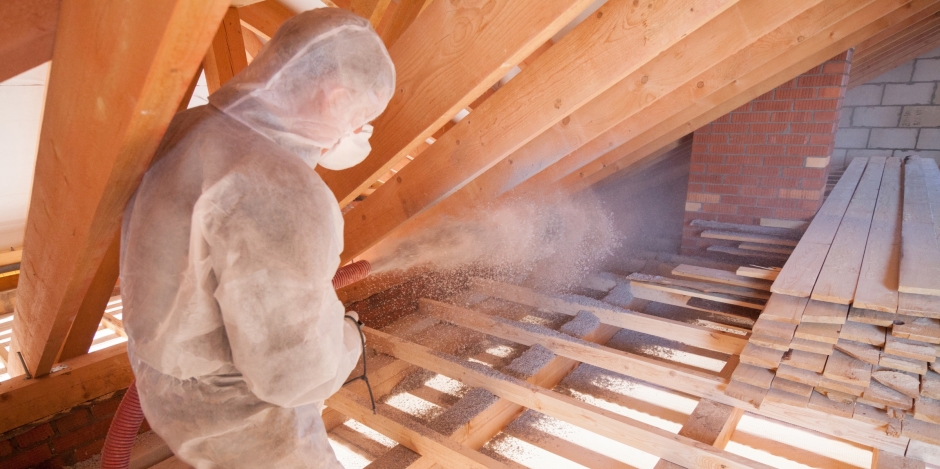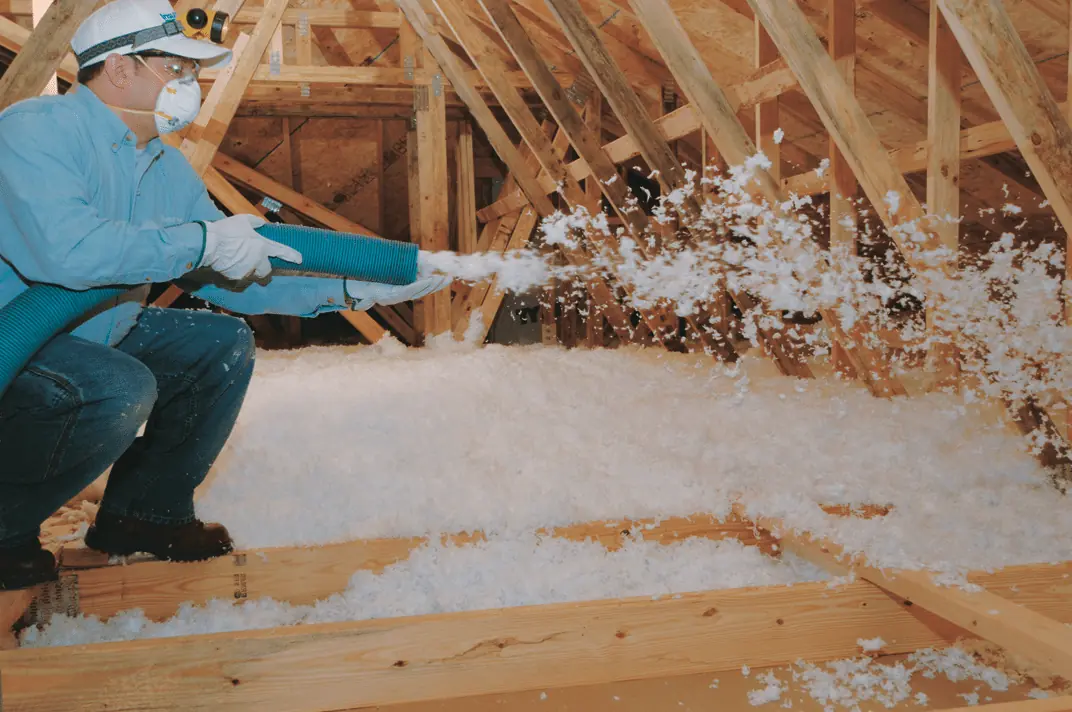Optimize Your Energy Savings with Specialist Attic Insulation DFW Solutions
Optimize Your Energy Savings with Specialist Attic Insulation DFW Solutions
Blog Article
Discover the Different Kinds Of Attic Insulation and Their Distinct Advantages for Your Home's Power Effectiveness

Fiberglass Insulation
Fiberglass insulation is among the most typically utilized materials for attic insulation as a result of its excellent thermal efficiency and cost-effectiveness. Composed of tiny glass fibers, this product properly traps air, developing a shielding obstacle that helps preserve consistent indoor temperatures. Its high R-value per inch makes it especially effective at withstanding warmth transfer, which is vital for energy preservation in homes.
Installment of fiberglass insulation is fairly uncomplicated, frequently readily available in batts or loose-fill forms, suiting various attic setups. Furthermore, it is non-combustible and resistant to wetness, lowering the danger of mold advancement. This sturdiness contributes to its long life, making fiberglass a practical long-lasting investment for house owners.
In addition, fiberglass insulation is often produced from recycled products, which boosts its eco-friendliness. The product can additionally add to soundproofing, lessening noise transfer between rooms. While it is crucial to wear protective gear during installment to stay clear of irritability from the fibers, the general advantages of fiberglass insulation, consisting of power financial savings and ecological considerations, make it a popular option for enhancing attic room efficiency and promoting a comfortable living setting.
Spray Foam Insulation
Spray foam insulation is a highly efficient alternative for attic insulation, known for its superior air securing and thermal efficiency. This innovative insulation material is made up of a blend of isocyanate and polyol resin, which, when integrated, increases quickly to fill up gaps and tooth cavities in the attic space. Its capacity to comply with various surfaces guarantees a constant barrier versus air leakages, substantially decreasing warmth loss throughout cooler months and heat gain during warmer seasons.
Among the vital advantages of spray foam insulation is its high R-value per inch, which implies it offers exceptional thermal resistance in a fairly slim application. This is especially useful in attics where area is commonly limited. Additionally, spray foam can help lessen dampness buildup, reducing the danger of mold and mildew and mildew growth, which can be destructive to both the structure and interior air quality.
While the initial expense of spray foam insulation might be higher than standard choices, its long-term energy financial savings, paired with enhanced convenience and boosted home worth, make it a rewarding investment for home owners seeking improved power efficiency. Attic Insulation DFW. Generally, spray foam insulation attracts attention as an efficient solution for enhancing attic room insulation
Cellulose Insulation

Cellulose insulation is a preferred selection for attic room insulation, largely made up of recycled paper items treated with fire resistants. This eco-friendly choice is understood for its outstanding thermal performance, efficiently lowering warm transfer in both summer and winter months. The thick structure of cellulose enables it to fill spaces and gaps in attic room areas, giving a smooth barrier against air leaks.
One of the considerable advantages of cellulose insulation is its capacity to resist mold and parasites, owing to the fire retardant therapies utilized throughout manufacturing. In addition, it flaunts a high R-value per inch, which equates into premium energy efficiency. Homeowners can anticipate lower heating and cooling expenses as an outcome of enhanced insulation.
Setup is commonly accomplished through blowing loose cellulose into the preferred location, permitting for a efficient and quick procedure. This approach page also decreases interruption to the existing framework. Furthermore, cellulose insulation has a fairly reduced ecological effect, as its manufacturing process makes use of recycled materials, adding to lasting structure practices.
Rock Wool Insulation
Among the various options for attic insulation, rock wool, read review likewise referred to as mineral wool, stands out because of its excellent thermal and acoustic efficiency. Made from all-natural or recycled products, rock wool is developed by thawing rock and rotating it into fibers, leading to an item that provides outstanding insulation residential or commercial properties.
One of the considerable advantages of rock wool insulation is its high R-value, which shows its performance in withstanding warmth flow. This particular not just boosts power performance yet also adds to preserving a comfy interior temperature year-round. In addition, rock wool is naturally fireproof, making it a safer choice for homes as it can endure high temperatures without melting or launching toxic fumes.
Additionally, rock wool insulation excels in soundproofing abilities, successfully minimizing noise transmission between rooms and from outdoors resources. This makes it an optimal choice for house owners seeking a relaxed living atmosphere. Moreover, rock woollen is moisture-resistant, helping to avoid mold and mildew growth and preserving the architectural integrity of the attic room area. In general, rock woollen insulation gives a thorough solution for boosting energy efficiency, safety and security, and comfort in household setups.
Glowing Obstacle Insulation
Radiant barrier insulation offers as a reliable remedy for lessening warmth transfer in attic rooms, especially in warmer environments. This sort of insulation works by showing glowing heat away from living areas, therefore lowering the quantity of heat that enters a home throughout heat - Attic Insulation DFW. Commonly composed of a very reflective material, such as aluminum foil, glowing barriers are set up in attic rooms, encountering the roof covering, where they can intercept inbound heat from the sun
The key advantage of glowing barrier insulation is its ability to reduced cooling prices. By mirroring warm as opposed to absorbing it, click for more info radiant obstacles can help keep a much more stable indoor temperature level, minimizing the workload on air conditioning systems. This performance equates right into reduced power bills and raised convenience for home owners.
In addition to power savings, glowing obstacles can additionally add to enhanced indoor air quality. By minimizing warm buildup, they aid lessen moisture degrees, which can protect against mold and mildew growth and boost overall air flow. When set up correctly, radiant obstacle insulation can be a very useful enhancement to any energy-efficient home, making it a worthwhile consideration for home owners aiming to boost their attic insulation strategy.
Final Thought
In verdict, understanding the various kinds of attic insulation-- fiberglass, spray foam, cellulose, rock wool, and radiant obstacles-- makes it possible for homeowners to make enlightened choices concerning power effectiveness. By selecting the ideal insulation material, substantial decreases in energy costs can be attained, along with improvements in indoor convenience.

In conclusion, recognizing the different types of attic room insulation-- fiberglass, spray foam, cellulose, rock wool, and glowing barriers-- allows homeowners to make informed choices relating to energy efficiency.
Report this page